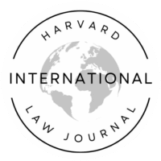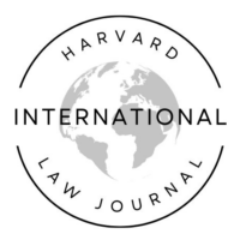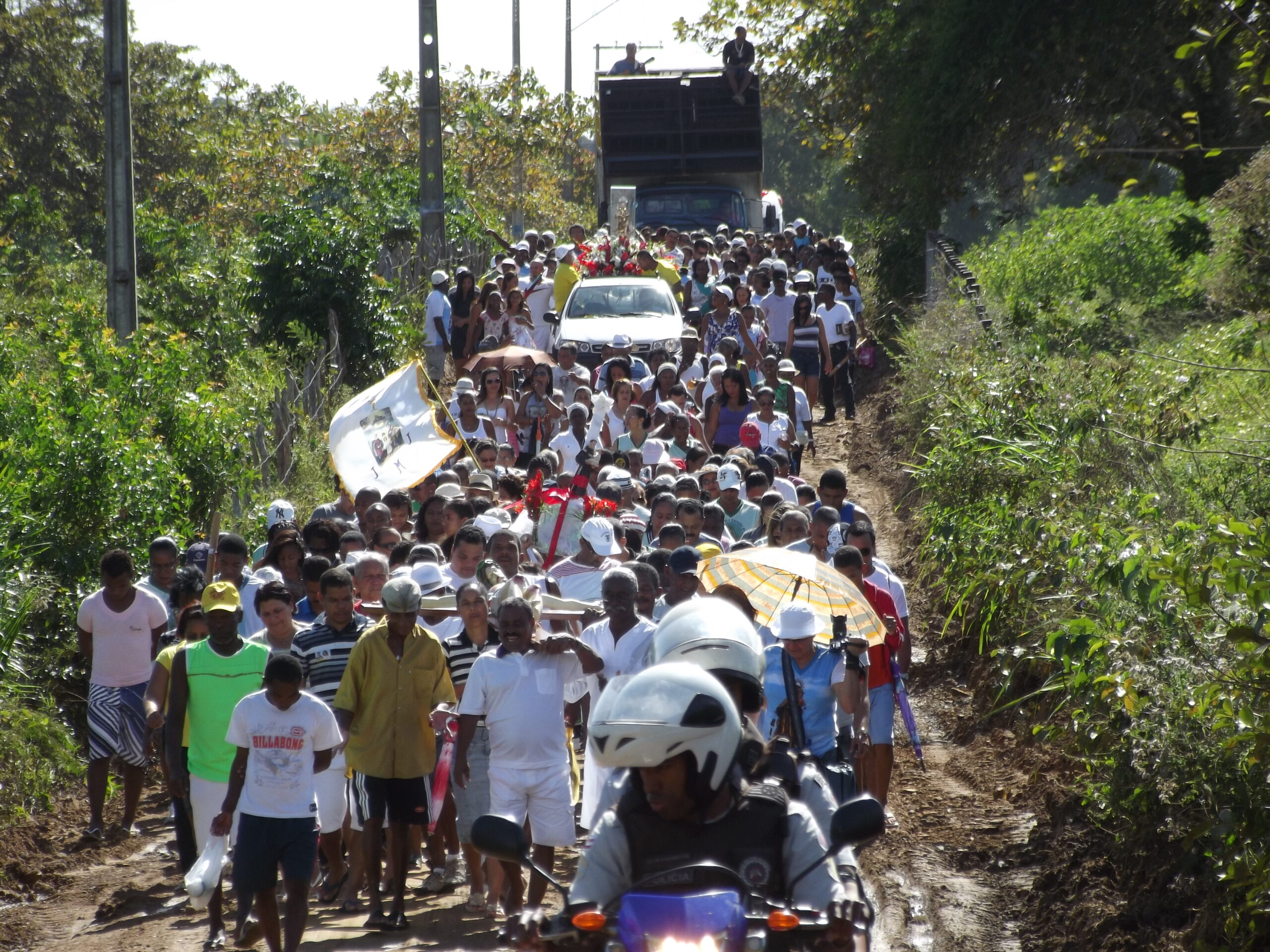Somewhere Over a Green Rainbow?—The Overlooked Intersection between the Climate Crisis and LGBTQ Refugees
Eoin Jackson*
The international community drafted the UN Refugee Convention (hereinafter ‘The Convention’) with the horrors of the Second World War still fresh in its mind. At the time, LGBTQ people were illegal in most countries and climate change was the stuff of scientific fantasy.[1] Despite this historical context, activists have sought to use the Convention to protect LGBTQ refugees, and now seek to achieve similar success with recognizing climate refugees.
This article analyzes the intersection between recognition of LGBTQ people as refugees and the potential recognition of climate refugees. It intends to briefly sketch out how the climate crisis might exacerbate issues faced by LGBTQ people such that their circumstances may escalate to the point where formal recognition under the Convention would be justified. It also examines how a queer lens could help advance efforts to formally recognize climate refugees under the constraints of the contemporary approach. Part I of this article analyzes the impacts of the climate crisis on LGBTQ refugees. Part II criticizes the recent Human Rights Committee decision in Teitiota v. New Zealand (2020)[2] for failing to consider the differentiated impact of climate change on vulnerable communities. Part III outlines suggestions for future efforts to recognize LGBTQ refugees and intersects these suggestions with the broader movement to recognize climate refugees.
Part I: The LGBTQ Community and the Climate Crisis
LGBTQ people are generally recognized as refugees using the ‘protected social group’ element of the Convention.[3] Most asylum officers will focus on whether there is a nexus between the sexuality/gender identity and persecution of the applicant.[4] Typically, this analysis involves an examination of home countries’ laws, attitudes, and policing of homosexuality/gender identity. Persecution of LGBTQ refugees includes considering how these laws and attitudes impact the capacity of the LGBTQ person to freely express their sexuality/gender identity.[5]
Importantly, many LGBTQ refugees are from the same countries where climate change is likely to have the most immediate impacts. These countries are found in regions of Northern Africa, Southeast Asia, and the Middle East.[6] In other words, countries’ existing poor track records on LGBTQ issues will now face additional social and economic challenges because of climate change.[7] Resources which could have been used to address social progress will need to be diverted to climate mitigation and adaptation measures.[8] This phenomenon most starkly exists in Pakistan, where large government resources will need to be devoted to addressing the impact of devastating floods.[9] However, as tensions increase in countries experiencing extreme weather changes and natural disasters, so does the possibility of groups who deviate from norms being blamed for the crisis. During the Covid-19 pandemic, for instance, LGBTQ people were blamed for the outbreak by leaders in Nigeria, Liberia, and Zimbabwe, among others.[10] Violence and state repression against LGBTQ people also increased during Covid-19, with many LGBTQ centers shut down and people arrested.[11] Should this pattern repeat itself, LGBTQ people will increasingly face demonization under the pretense of being the ‘cause’ of the relevant climate disaster. This demonization may also happen in countries which, at least on paper, have LGBTQ protections or have legalized homosexuality. The instability caused by climate change means that old political norms may break down by extremist forces.[12] Thus, there can be no guarantee that LGBTQ people retain their protected social standing, which may, in turn, complicate efforts to recognize their refugee status when they are from what were previously considered ‘safe’ countries.[13]
The climate crisis exacerbates these issues by inflaming political controversy through the loss of dwindling resources. If LGBTQ people reside on the margins of society, it increases the chance that they will be denied access to these resources. Many LGBTQ communities report a higher rate of homelessness and poverty worldwide.[14] This trend particularly affects the transgender community, who often experience higher rates of hatred and violence, and may struggle to access jobs and affordable housing.[15] As countries experience a loss of wealth, LGBTQ people may be forced to flee to find better economic opportunities.[16] In particular, the violence they experience when accessing resources in an ever-diminishing market may trigger a need to leave what could have been a previously stable country. However, the framework of the Convention does not generally include economic migrants, and it is already difficult to prove that an LGBTQ person merits asylum when there is no direct evidence of political persecution.[17] The climate crisis may therefore raise barriers for LGBTQ people both economically and in terms of being able to adequately convey their need for asylum to officers.
This persecution is also intersectional. Climate change has a worse impact on females, with women being at higher risk of domestic violence and forced migration as the effects of climate change worsen.[18] Similarly, people of color are more likely to reside in areas facing a high rate of pollution or be at greater risk from health problems as a result of climate change.[19] LGBTQ people who exist within this spectrum therefore face multiple hurdles as they tackle the additional challenges posed by intersecting identities. From a refugee law perspective, it also makes it harder to have the LGBTQ aspect of their identity vindicated during the asylum process, as they may seek to confine themselves within the limited scope of the Convention. Gender, for example, is not automatically included under the definition of a refugee but is, like membership of the LGBTQ community, included under the ‘protected social group’ category.[20] This intersectionality means that an LGBTQ woman fleeing climate change focuses on the female aspect of her identity without being able to demonstrate how or why being LGBTQ also exacerbates these effects.[21]
Climate change could therefore heighten the nexus between persecution and identity, such that an LGBTQ person could partially rely on the climate crisis to obtain protection. It could also trigger persecution and a need to flee where none previously existed. However, as noted by Professors Goodwin-Gill and McAdam, it may prove difficult to tie the effects of climate change into persecution while maintaining the nexus between these effects and membership of a protected social group.[22] It is not that the political and economic repression of LGBTQ people would go unrecognized. Instead, there is a theoretical problem that fails to appreciate how these issues were caused by or worsened by the climate crisis.[23] If the cause of the persecution is not viewed holistically, then it is difficult for an asylum system to wholly encapsulate the individuality of the refugee, or the reasoning for justifying an asylum claim. This could, in turn, impact the capacity of the LGBTQ person to communicate how their identity worsened the impact of the instability generated by climate change. If climate change is only viewed in a ‘traditional’ manner (i.e., a focus on physical effects such as increased flooding), there is a risk that the unique difficulties experienced by LGBTQ people will go under-valued. Given how overlooked LGBTQ people often are in the grander scheme of refugee law,[24] climate change may render the compounding of their problems invisible amidst the wider deluge.
Part II: Teitiota v. New Zealand
The UN Human Rights Committee’s recent decision in Teitiota v. New Zealand[25] further indicates the difficulty of incorporating an intersectional perspective on LGBTQ refugees into the climate discourse. In Teitiota, the applicant attempted to halt his deportation back to Kiribati on the basis that the effects of climate change on the island posed a serious threat to life. This argument could have allowed the applicant to reside in New Zealand due to the Convention’s non-refoulement clause. The Human Rights Committee advised that, while it was possible for climate change-based displacement to trigger the non-refoulement clause, the applicant failed in his argument because there was no immediate threat to life.[26]
Of particular interest for this article is the emphasis the Human Rights Committee placed on the requirement that the risk posed by climate change ‘must be personal, that it cannot derive merely from the general conditions in the receiving state, except in the most extreme case.’[27] This requirement is problematic in the LGBTQ context when the decision of the New Zealand High Court (which the Superior Courts and the Human Rights Committee upheld) is examined.[28] Here, the High Court noted that the alleged persecution from climate change was ‘indiscriminate,’[29] and, as a consequence, could not fall within one of the five Convention grounds. In doing so, the Court did not acknowledge the particular vulnerabilities that marginalized people experience because of climate change. Professor Chhaya Bhardwaj correctly views this analysis as ‘surprising,’ given that refusal to allow the applicant to remain in New Zealand also affected his children,[30] whose generation is, per the Inter-Governmental Panel on Climate Change, more likely to be adversely affected by climate change.[31]
The emphasis on human agency when considering persecution under the Convention also complicates LGBTQ climate refugee protection under the existing regime. The Committee asserted that, because the state still had the capacity to engage in ‘intervening acts’ before climate change devastated the island, the threat to life was not imminent.[32] Professor Simon Berhman points out that this ruling leaves states in a dilemma.[33] On the one hand, the state could act to mitigate climate change. However, this intervention is likely to be ineffective considering the limited resources possessed by an individual state, particularly those who struggle with poverty and inequality. In doing so, the state condemns its population to a rejection of refugee claims under the Convention. On the other hand, the state could refuse to act to prevent the worst effects of climate change. This non-intervention results in the eventual decimation of the state’s resources but raises the chance that its population can obtain refugee status. In either scenario, LGBTQ people and, in particular, female members of the LGBTQ community are among the most disadvantaged.[34] They are either likely to bear the brunt of the loss of resources as the state diverts its attention to climate change, or, as Balsari notes, experience the worst effects of the instability arising as a nation falls victim to environmental degradation.[35] These impacts are also gender sensitive, due to the traditional tendency for women to be more dependent on the natural resources of the land, as a result of the lack of broader economic opportunities within oppressive systems.[36] It can also be attributed to the wider trend within political systems in which women are one of the first groups to experience additional discrimination when there are social and cultural tensions caused by a loss of resources.[37]
The intersectional consequences of the Teitiota approach to climate refugees are more apparent when examined in the context of the high threshold set by the Human Rights Committee to demonstrate that there was a serious threat to life. The applicant was obliged to demonstrate that ‘the supply of fresh water [was] inaccessible, insufficient or unsafe’ and that he would be exposed to a ‘situation of indigence, deprivation of food, and extreme precarity’ to make a successful claim.[38] However, as Professor McAdam argues, this threshold is too high where a range of rights are impacted by environmental degradation.[39] In both the queer and female context, insufficient access to food and water could, as documented by Marina Andrijevic, contribute to a rise in domestic violence, or increase the likelihood of falling into poverty as patriarchal structures react to environmental challenges by removing economic opportunities from women and trans communities.[40] Gay men may also experience this backlash and be forced to conform with patriarchal standards by staying in the closet to avoid the backlash experienced by their more visibly vulnerable counterparts. Thus, not only is there a serious threat to life, but broader rights to equality, dignity, and liberty are also impeded.[41] The gender-blind attitude taken in Teitiota will make it difficult for courts to interpret similar cases in a manner that could account for these cumulative violations. If courts view climate change as affecting everyone equally, it is more difficult to justify why LGBTQ people are uniquely vulnerable to its effects. This perspective has consequences for any minority seeking to have their experiences incorporated within modern refugee frameworks.
While Justice Max Barrett correctly praises the Teitiota decision for not precluding a future claim based on the effects of climate change,[42] it does little to ameliorate concerns that the refugee framework ignores intersectional difficulties experienced by people who may be or will be fleeing the effects of climate change.
Part III: The Path Forward for LGBTQ Refugees and Climate Change
Our understanding of the intersection between the climate crisis and its impact on LGBTQ people is in its infancy. While climate refugees remain an unrecognized concept, there are several avenues asylum officers could take to ensure adequate protection of LGBTQ people caught up in the wider stream of migration.
Firstly, a broader interpretation of persecution will assist the general recognition of a climate refugee.[43] Climate inaction will be the central cause of worsening effects of climate change. These increased effects, in turn, will perpetuate social and economic inequity that is consistent with the oppression of LGBTQ people. It will either increase their likelihood of facing a backlash or decrease their ability to advance equality as the state devotes its time and resources to managing climate change-related chaos. Recognizing how and why the effects of climate change are human-oriented, and therefore in line with our perception of persecution, will be an important marker in vindicating climate refugees.[44] There will be a need for this broad lens as more climate refugees flee their homelands in search of safer territory.[45] This should eventually lead to a reckoning in terms of reforming the wider Convention, but for the moment, the broader scope of persecution proposed here may be a useful stop gap.
Secondly, there should be a rejection of the view that climate change is indiscriminate. It is evident, from both a science and policy perspective, that climate change will have a worse impact on women, LGBTQ people, and other marginalized groups. One way in which to reject this view is to adopt the suggestion of Professor McAdam that a ‘range’ of potential rights violations be examined when considering the impact of climate change.[46] A cumulative approach, as opposed to a strict threshold, would also assist LGBTQ refugees in meeting the harm element to the alleged threat posed by climate change.[47] This approach could draw on the broader cultural and social dynamics that contribute to the disadvantage experienced by LGBTQ people in society. This would mean that LGBTQ people at risk of climate change-driven persecution could have this persecution recognized through citing a range of particular rights they feel have been threatened by the increased effort to challenge their existence.[48] While this solution is imperfect, it is perhaps the most feasible method of recognizing intersectional concerns within the limited framework of the Convention, due to the avoidance of a political battle for wholescale reform.[49] It would also ensure some form of queer lens is present in climate refugee interpretation. Claimants would not only be focusing on the physical effects of climate change, but the resulting social pressure on them to conform with the norms of the devastated vulnerable community.
Conclusion:
The battle to recognize climate refugees will begin in earnest this decade as the effects of climate inaction come to roost. Those pursuing this goal must ensure that marginalized social groups can see their persecution understood and vindicated through protection. The effects of the climate crisis on the LGBTQ community have thus far been under-researched and under-appreciated. This article intends to shed some light on the future dangers to the LGBTQ community and demonstrate how these dangers could align with Convention interpretations. The Teitiota decision is clearly a pyrrhic victory for climate activists, but it should be built upon. The hope is that any foundation will prioritize feminist and queer lenses to create a nuanced perspective on the climate refugee.
* LL.M. Candidate at Harvard Law School.
[1] Edwin O. Abuya, Ulrike Krause, Lucy Mayblin, The Neglected Colonial Legacy of the 1951 Refugee Convention, 59 J. Int’l Migration 4 (2021).
[2] Teitiota v. New Zealand, UN Human Rights Committee, (2020).
[3] United Nations Refugee Agency, LGBTQI Persons, https://www.unhcr.org/en-us/lgbtiq-persons.html; Volker Türk, Ensuring Protection to LGBTI Persons of Concern, 25 Int’l J. Refugee 1 (2013).
[4] Annamari Vitikainen, LGBT Rights and Refugees: a Case for Prioritizing LGBT Status in Refugee Admissions, 13 Ethics & Glob. Pol. 1, 64 -78 (2020).
[5] Id.
[6] World Meteorological Organization, State of the Climate in Africa 2020 (WMO-No. 1275) (2021); IPCC, Sixth Assessment Report (2022); OECD, Poverty and Climate Change (2015); NW Arnell et al., The Global and Regional Impacts of Climate Change Under Representative Concentration Pathway Forcings and Shared Socioeconomic Pathway Socioeconomic Scenarios, 14 Env’t Rsch. Letters 8 (2019).
[7] S Nazrul Islam, Climate Change and Social Inequality, DESA Working Paper No. 152 (2017).
[8] Id.
[9] Suranjana Tewari, Pakistan Floods Put Pressure on Faltering Economy, BBC News (19th September 2022), https://www.bbc.com/news/world-asia-62830771.
[10] Grame Reid, Global Trends in LGBT Rights During the Covid-19 Pandemic, Hum. Rts. Watch (2021); Graeme Reid, LGBTQ Inequality and Vulnerability in the Pandemic (2020); Hugo Greenhalgh, Religious Figures Blame LGBT+ People for Coronavirus, Reuters (2020).
[11] Id.
[12] Sellers S, Ebi KL, Hess J., Climate Change, Human Health, and Social Stability: Addressing Interlinkages, Environ Health Perspective; Von Uexkull, N., and Buhaug, H., Security Implications of Climate Change: A Decade of Scientific Progress, J. Peace Rsch., 58(1), 162–185, (2021).
[13] See The Williams Institute, LGBTQI+ Refugees and Asylum Seekers: A Review of Research and Data Needs (2022).
[14] The Williams Institute, LGBT People and Housing Affordability, Discrimination, and Homelessness (2020).
[15] United Nations Independent Expert on Protection Against Violence and Discrimination Based on Sexual Orientation and Gender Identity, The Impact of the Covid-19 Pandemic on the Human Rights of LGBT Persons (2021).
[16] Johannes Lukas Gartne, (In)credibly Queer: Sexuality-based Asylum in the European Union, Transatl. Persp. on Dipl. and Diversity (2015).
[17] Id.
[18] Phudoma Lama, Gendered Dimensions of Migration in Relation to Climate Change, Journal of Climate and Development (2021); Chindarkar, Gender and Climate Change-Induced Migration: Proposing a Framework for Analysis, Env’t Rsch. Letters (2012); Brockhaus, Is Adaptation to Climate Change Gender Neutral? Lessons from Communities Dependent on Livestock and Forests in Northern Mali, Int’l Forestry Rev. (2011).
[19] JD Kaufman, Confronting Environmental Racism, Env’t Health Persp. (2021).
[20] Alice Edwards, Transitioning Gender: Feminist Engagement with International Refugee Law and Policy 1950–2010, Refugee Surv. Q. (2010).
[21]Phudoma Lama, Gendered Dimensions of Migration in Relation to Climate Change, J. Climate and Dev. (2021).
[22] Guy Goodwin-Gill and Jane McAdam, The Refugee in International Law, 4th Edition, Oxford University Press, 2021, 644.
[23] Conor Cory, The LGBTQ Asylum Seeker: Particular Social Groups and Authentic Queer Identities, Geo. J. Gender l. (2019).
[24] Id.
[25] Teitiota v. New Zealand, UN Human Rights Committee, (2020).
[26] For a full overview of the case see Bhardwaj, C. (2021). Ioane Teitiota v. New Zealand (advance unedited version), CCPR/C/127/D/2728/2016, UN Human Rights Committee, 7 January 2020. Env’t L. Rev., 23(3), 263–271.
[27] Teitiota v. New Zealand, UN Human Rights Committee, (2020).
[28] Teitiota v. The Chief Executive of the Ministry of Business Innovation and Employment [2013] NZHC 3125.
[29] Id.
[30] Bhardwaj, C. (2021). Ioane Teitiota v. New Zealand (advance unedited version), CCPR/C/127/D/2728/2016, UN Human Rights Committee (HRC), 7 January 2020. Env’t L. Rev., 23(3), 263–271.
[31] PCC, Sixth Assessment Report (2022).
[32] Teitiota v. New Zealand, UN Human Rights Committee, (2020).
[33] Simon Berhman, The Teitiota Case and the Limitations of the Human Rights Framework, Questions of Int’l l. (2020).
[34] Id.
[35] Satchit Balsari, Climate Change, Migration, and Civil Strife, Current Env’t Health Rep. (2020).
[36] UN Environment Program, Women and Natural Resources Unlocking the Peacebuilding Potential (2013).
[37] Id.
[38] Teitiota v. New Zealand, UN Human Rights Committee, (2020).
[39] Jane McAdam, Protecting People Displaced by the Impacts of Climate Change: The UN Human Rights Committee and the Principle of Non-refoulement, Am. J. Int’l L. (2020).
[40] Marina Andrijevic, Overcoming Gender Inequality for Climate Resilient Development, Nature Commc’n (2020).
[41] Christel Querton, Gender and the Boundaries of International Refugee Law: Beyond the Category of ‘Gender-Related Asylum Claims’,Netherlands Q. Hum. Rts. (2019).
[42] Justice Max Barrett, Climate Change Migration and the Views in Teitiota, Irish Jud. Stud. (2021).
[43] Jenny Han, Climate Change and International Law: A Case for Expanding the Definition of “Refugees” to Accommodate Climate Migrants, Ford. Undergraduate L. Rev. (2019).
[44] Joanna Apap, The Concept of ‘Climate Refugee’ Towards a Possible Definition, European Parliament Briefing (2019).
[45] Id.; UN High Commissioner for Refugees (UNHCR), Legal Considerations Regarding Claims for International Protection Made in the Context of the Adverse Effects of Climate Change and Disasters, 1 October 2020, https://www.refworld.org/docid/5f75f2734.html.
[46] Jane McAdam, Protecting People Displaced by the Impacts of Climate Change: The UN Human Rights Committee and the Principle of Non-refoulement, Am. J. Int’l L. (2020).
[47] Id.
[48] Olajumoke Haliso, Intersectionality and Durable Solutions for Refugee Women in Africa, J. Peacebuilding and Dev. (2016).
[49] Brienna Bagaric, Reforming the Approach to Political Opinion in The Refugee Convention, Ford. Int’l L. J. (2020).
Image Credit: Lauri Kosonen, CC BY-SA 3.0, https://creativecommons.org/licenses/by-sa/3.0/deed.en.



